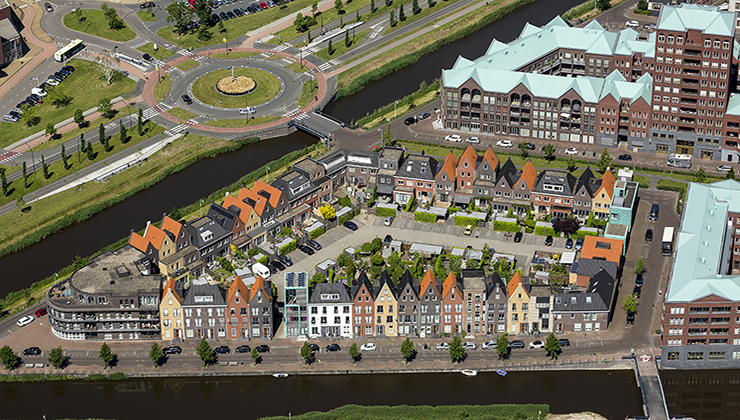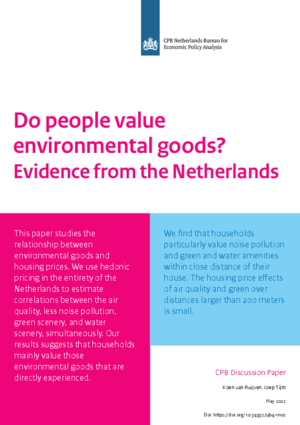Do people value environmental goods? Evidence from the Netherlands

We find the strongest price effects for greenery and water within 50 meters of a house. In particular, the price relationship for greenery decreases the further away the greenery is from a house. For example, we see that a 10% increase in the percentage of grass and shrubs (trees) within 50 meters is associated with a 1% to 4% (1% to 3%) increase in house prices. For water, we find that a comparable 10% increase is associated with a 0.5% to 1.5% increase in house prices.
Our results have important policy implications, as they suggest that households have a limited willingness to pay for environmental goods that they do not directly notice. This result is especially relevant for air pollution. Recent studies indicate that health costs are significantly higher than our estimates of what households seem willing to pay for better air quality. This suggests that households are not fully aware of the effects of local air pollution on their health when purchasing their home.
Downloads
Authors

